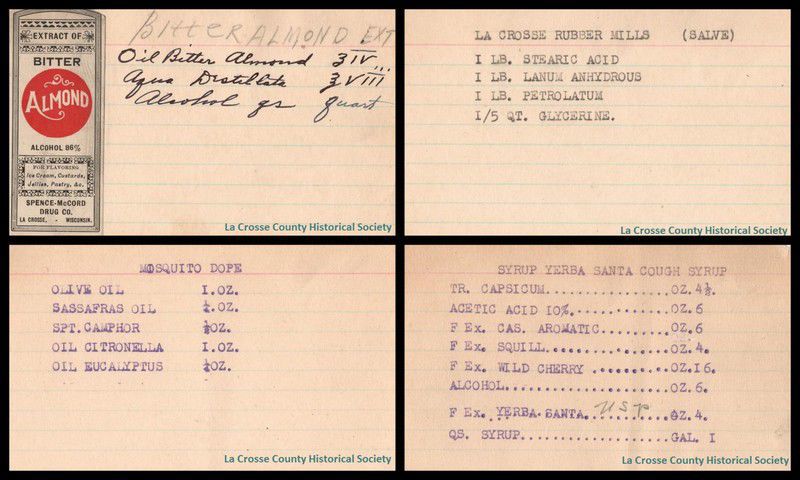Hailey Hudzinski
Catalog Number: 2017.020.01
Copyright La Crosse County Historical Society
The Spence-McCord Drug Co. was formed after the 1905 merger of the James McCord Drug Co. (founded in 1864) and the T.H. Spence Drug Co. (founded in 1874).
The company first occupied a four-story brick building in downtown La Crosse that was destroyed in a May 4, 1905, fire. The building next door, then home to the Funke Candy Co., was badly damaged.
The Funke Candy built its factory in 1898 on the site of the first building in La Crosse, a log cabin constructed in 1842 by Nathan Myrick. He established a trading post here and is generally recognized as the founder of modern La Crosse. The candy company operated in this building for 35 years until its closure in 1933. In 1937, Spence-McCord moved into the vacated building and operated there until 1963, when it expanded into a warehouse and office building at 1502 Miller St. The downtown building was sold to the owners of Ross Furniture. Since 2014, the building has been home to the Charmant Hotel.
The expansion and success of Spence-McCord was not just limited to La Crosse. Although the company was founded here, it operated offices in Mankato, Minn., Green Bay and Madison.
Spence-McCord also played a significant role in efforts to eliminate polio. In 1958, Spence-McCord published a series of ads in the La Crosse Tribune reminding citizens to receive the vaccine. In 1961, Spence-McCord’s Green Bay office received the first shipment of the Sabin oral polio vaccine in northeastern Wisconsin, which was then shipped to area doctors, hospitals and drug stores. In 1963 and 1964, Spence-McCord aided in polio immunization programs in both La Crosse and Green Bay. In Green Bay, the clinic offered the vaccine free of charge but encouraged a 50-cent donation to cover the cost.
Not only did the company provide essential vaccines, it also created recipes for a variety of items. The La Crosse County Historical Society received a donated Spence-McCord recipe box from Shirley Lesky, who worked in the company’s accounts payable department for more than 20 years. She kept the box as a memento when the business closed in 1973 — and we’re glad she did.
It contains recipes for a variety of balms, lotions and ointments, some more conventional than others. A recipe for bedbug exterminator calls for corrosive sublimate and wood alcohol. Spence-McCord’s grasshopper poison requires bran, molasses, Paris green or crude arsenic, amyl acetate and water. Mosquito dope (my personal favorite) calls for olive oil, sassafras oil, spirit of camphor, citronella oil and eucalyptus oil.
For more original Spence-McCord recipes, visit our website, wwww.lchshistory.org, but, please, don’t try them at home.
This article was originally published in the La Crosse Tribune on February 18, 2018.
This object can be viewed in our online collections database by clicking here.



